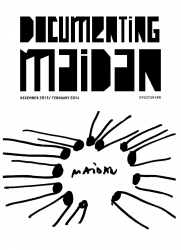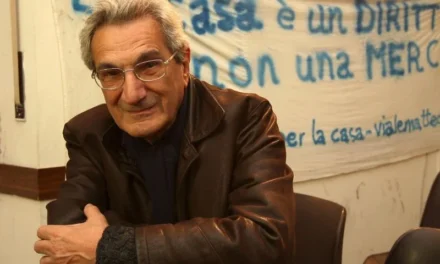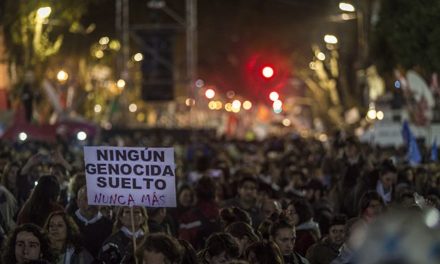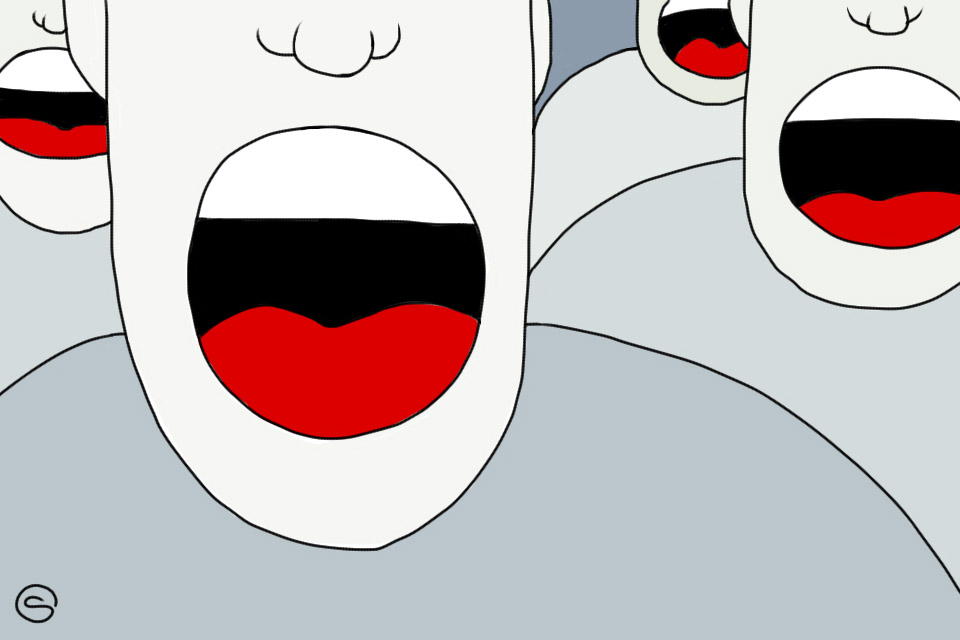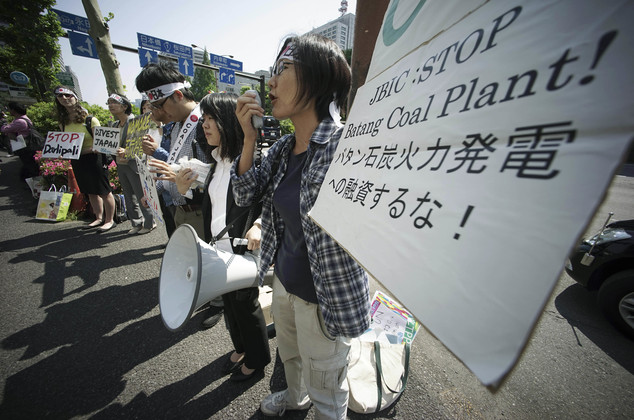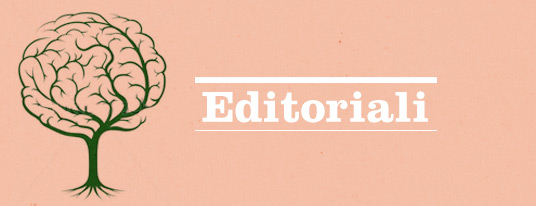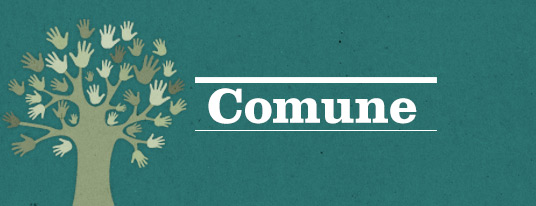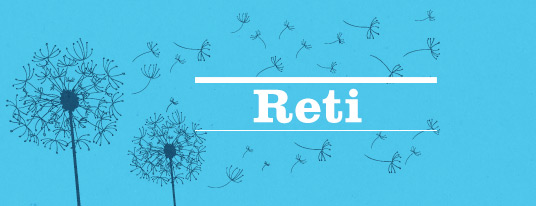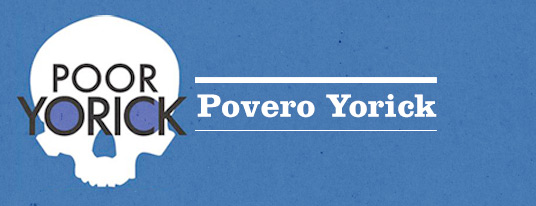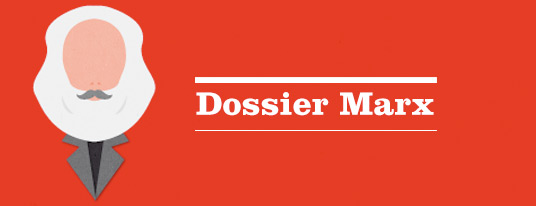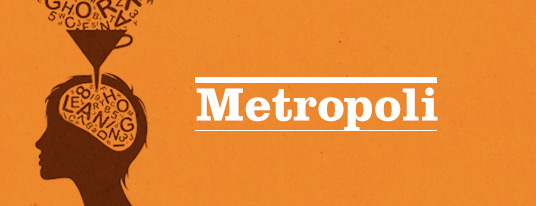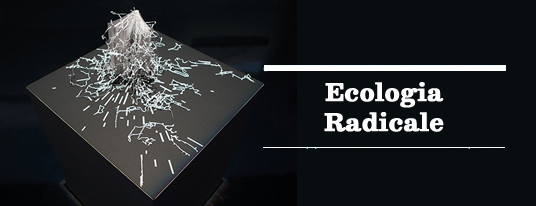Riprendiamo una conversazione a più voci pubblicata sul recente numero della rivista ucraina → Prostory (Spazi)1 intitolato “Documenting Maidan” con interventi di artisti, scrittori, curatori, traduttori, poeti.
A partire da una serie di domande, i partecipanti a questa conversazione discutono del loro coinvolgimento soggettivo nella protesta e del modo in cui è stata percepita o agita dagli intellettuali ucraini, cercando di coglierne la componente simbolica e il suo potenziale nel costruire nuovi miti sociali o nazionali. Al di là dei clichés cui ci hanno abituato i media occidentali, quello che emerge da questa discussione è un resoconto sfaccettato e parziale di Maidan, vissuta in prima persona da alcuni soggetti che si muovono tra il mondo dell’arte, della letteratura, della cultura e diverse forme di attivismo. Quella che proponiamo qui non è un’analisi teorico-politica di Maidan, né un punto di vista univoco su di essa, ma un resoconto multiplo e soprattutto colto sul vivo, mentre Maidan stava ancora bruciando.
Prostory (Spazi) è una rivista bilingue (russo e ucraino) dedicata alla letteratura, all’arte, alla traduzione letteraria e alla critica sociale. Il lavoro editoriale è fondato sull’auto-organizzazione e si ispira ai principi politici e intellettuali di una New Left attenta al femminismo. La redazione di Prostory è composta da intellettuali, scrittori e traduttori che vivono in Ucraina, Russia, Germania e Regno Unito.
La rivista è distribuita in Ucraina e si può ottenere contattando la redazione prostoryred@gmail.com
http://www.prostory.net.ua/
Our editorial conversation came to an end at a time of large-scale transformations – on the 24th of February, 2014. In Kharkiv, eastern Ukraine, people were fearing violent clashes between Maidan activists and paramilitary groups; at the same time the Ministries in Kyiv were seemingly under protesters’ control; in one university, students had expelled their corrupt administration and organized a students’ self-governing body. And as this journal goes to print, Ukraine’s history continues to write itself.
How did the protest start for you?
Nelia Vakhovska: Our experience of Maidan is of an autonomous political body that expresses distrust of all politicians—both the authorities and the opposition. In terms of party politics, this body, passionate and motley in its social and ideological composition, is apolitical. Its beginning reminded me very much of the Orange Revolution: a peaceful protest, pop culture and the circle dances of the middle classes who wanted to join Europe. But the street clashes revealed something else: the outrage, anger, and despair of various social classes who were tired of the arbitrariness of the authorities.
A “revolution” without hope. It sounds banal, but the watershed between dreams of Europe and the dreams of the Ukrainian “here-and-now” ran in blood: first, it was beaten-up students, and then activists were killed. Tipped by the dysfunctionality of the current government, for me what had been an ambiguous nationalist-(dis) oriented protest turned into a real revolution without quotation marks.
Yevgenia Belorusets: By December, the peaceful protest had already become unpredictable, as if it was trying to resist interpretation. It seems that from the very first days, the Euromaidan was a field of symbolic struggle. The Maidan is a thought in the process of forming, which has not yet been expressed, a place of hidden political currents that can be perceived physically, but not intellectually. It’s also a stage upon which there has been a permanent, plain to see struggle for the appropriation of these political currents, for acquisition of power over them, for intrusion of some rhetoric or other. The authorities made repeated attempts to destroy the protest. Meanwhile, the political “opposition” is still peddling the outdated yet timeless “The heroes are You!” at a very high price.
Nataliya Tchermalykh: My first Maidan was a virtual one: it began online, on social networks – it was #Euromaidan. The political landscape was changing rapidly, and we couldn’t take our eyes off the screens… Early in the morning on February 24th, anarchists from St. Petersburg, working with artist Petr Pavlenskiy, did a performance entitled “Freedom” in front of St. Basil’s Cathedral in Moscow: the activists torched a pile of tyres, creating a smoky landscape in the centre of the northern capital, an image which over the winter had become firmly associated with Kyiv. Whatever the political results of the revolution, Maidan has become a strong visual narrative, a call to political action in the post-Soviet field and even beyond its territory. The reverberations of this dialogue will probably echo for a long time from all sides. The Maidan of these three months is uncharted territory, for which the ideological, political or ethical navigational marks we are used to relying on have turned out to be irrelevant. Maidan dissolved into thousands of different voices that have stubbornly refused to merge into a single harmonious melody. The only common denominator of this complex anthropological and social matter has been the tragic ritual of collective mourning for the people who died from the 18th to the 20th of February, 2014. It still remains for us to create the map of this territory: perhaps we each need to be ready to question all of our beliefs and (pre)judgments.
Your personal involvement in the protest. What forms have they taken (or not)?
N.V. “Don’t shoot, you bastards!” – shouts an activist in the city of Khmelnytsky by the body of a woman shot by a member of the Secret Police. It seems that this has become my formula of the protest. I cannot assent to the misogynist, homophobic, xenophobic, or populist implications of Maidan. During periods of truce, I can’t find a place for myself there at all – sometimes because of geographical distance, but mostly because of ideological incongruity with empty discourse about a nation, machismo, paramilitary discipline, the unruliness of radical right-wing groups, the absence of a political or social programme, etc.. But even then I constantly find myself thrown onto Maidan – by Putin’s news blinding my family, by the narcissism of the Ukrainian leftists, by the primitiveness of European media reports on Ukraine. I’m tangential to the whole thing. However, on days like today (February 18, 2014), when citizens of Ukraine were declared terrorists, ideological incompatibility goes out the window and I take the side of citizens in conflict with their state. From this point of impotent rage, I repeat: “Don’t shoot, you bastards!” And I go to help at the hospital.
Y.B. Politics came knocking at our door, it took over our lives, precluded non-involvement. Yet, at the beginning of this protest, I could not imagine myself as an inseparable part of it. Obstacles for me were right wing rhetoric, the absence of political representation for the majority of protesters, and every variety of populist occupying the microphone.
The participation of others, of people who relocated to the squares of Kyiv as early as December, looked like an enormous sacrifice, a burdensome task. When the peaceful protest began, many had to pay for their participation with the drama of homelessness. I saw shivering, exhausted people sitting for hours near the barricades, taking some rest around burning barrels or inside freezing tents, crossing muddy streets hurriedly, to stay warm. Even at night, they couldn’t leave Maidan. There’d be attempts to drive them off the square, and they’d arm themselves with shields and sticks. In the freezing weather, they sprayed water cannons at them, shot at them with rubber bullets, and then, with real ones.
Ukrainian political reality was not content with an opinion; words, signs, shouting – for many years they hadn’t meant a thing. Investigative articles by Ukrainian journalists seemed like an unending weak argument for any action on a political level. That which is being formulated is of itself devoid of value.
The order to shoot unarmed people was an assassination attempt on a field which the authorities were gradually taking. An ingress beyond the pale of economics into an existential sphere, where violence and domination assume completely different proportions, no longer an opinion, but instead, a place where the very existence of man is reduced to a formality, which can be ignored.
What do you think of the symbolic/mythical field of this protest?
N.V. From the very beginning, Maidan emerged on a see-saw between Europe and Russia, and it quickly slid into the axiological apposition of light and darkness (which the protestors themselves translated into ironic register: Berkut riot police as Ringwraiths2, etc.), us and them, typical of a mythological epic poem. In this framework, an archaic gender structure naturally emerged (“the girls sang the national anthem and the boys protected them”), plots of “love at the barricades” and “love on the opposite sides of the barricades,” the rituals of the OUN and UPA3; the “them” has expanded into others both external (above all, the Russians) and internal (provocateurs, Eastern Ukraine, etc.). At the same time, suffering was threaded onto a core of “ours” along with the national idea it legitimized and all the monstrosities of radical nationalism as an add-on. But all of this is not new, partly self-ironic and natural; after all, the presence of barricades causes bi-polarity.
N.T. Yes, there is no doubt that heroic epos will be written about Maidan: nowadays this mythical and poetic language is dominant in Ukrainian culture. The state still speaks to its citizens in the romantic language of the 19th century. I’m interested in another dimension of Maidan – as a political symbol of spontaneous democracy. But this democracy lies rather in an abstract, mythical field. In its structure, it is an oxymoron: it is based on the mutually exclusive logic of state-building and anarchy, the construction of a “New Ukraine” and “Zaporizhian Sich”, whose historical significance was that it was an anti-state, one which albeit existed as a separate paramilitary republic. What could be more paradoxical than an anarchic republic within an oligarchic state? The paradox lies in the decision-making system, the democratic basis of the Maidan. It is entertaining to think how people are informed and mobilized via the most advanced Internet technologies, and yet the very decision-making is done by hand, the old-fashioned way: no one counts votes; he who shouts loudest is right. That’s of course only if this voice is not immediately drowned out by the stage, that is, by those who speak on behalf of the Maidan, yet who have not been elected. The paradox is also present in the main moral imperative of Maidan: the ethics of total reciprocity. The micro-politics of the everyday brings happiness from involvement and empathy – but at the same time it completely obscures the necessary social structure, which we need to rebuild for society to function. The moral imperative supplants the social?
Vasyl Lozynskyi: The most powerful thing was the symbolic field of the protest, but the myth is mostly what remains from the past. Meanwhile a new mythology is being created, one which we’ll hear more of in future. I think that not only proven techniques and tactics of protest were implemented, but there have been many discoveries, for example how urban communities can adapt to long-lasting protest, and the public sphere may give birth to new social forms. Therefore grassroots activism is exactly what fed the various myths, both moderate and right- wing ones. It is important that these grassroots currents produce mechanisms of cooperation and do not turn into the legitimization of the myth of power and violence.
Taras Fedirko: The Maidan borrows its title from the Ukrainian name for Kyiv’s main square— Maidan Nezalezhnosti (Independence Square). There is less geography than history here. In 2004/5, the “Orange revolution” protests taking place in Independence Square set the precedent for calling any nation-wide protests a “maidan.” The word thus became a shorthand term for significant civil attempts of recent Ukrainian history. In 2010, there was the Tax Maidan, and in November 2013 protesters quickly came up with the new name, “Euromaidan.”
Now that the Euromaidan has seemingly “won,” its root word becomes a warning. As the “Orange” maidan turned into a big political disappointment, it led to affective and social disenfranchisement from the politics of many former protesters. Then, in 2004/5, many channeled their hopes and expectations into personal trust in leaders and their transformative political agency. Now, the “Euro” bit of Euromaidan is often used to refer to a rather indefinite domain that can conveniently be used to deposit political hopes and develop dreams opposing political realities. “Europe” is a long-standing Ukrainian myth, and there is a rich post-Soviet, post-Cold War history of beliefs in the bright European future of Ukraine. Indeed, Western commentators ironically pointed out that Ukrainian protesters seemed to believe in the united Europe more than citizens of the European Union, marginalized by the democratic deficit, economic crisis, and austerity. Others—chiefly the marginal Ukrainian Left and liberals opposed to nationalism—saw their task as reminding people that ethnic nationalism and exclusivist politics of maidan do not pair well with “European values,” whatever these could mean. Yet, as the disappointment with the “deep concerns” and inaction of Western leaders accumulated, “maidan” gained popularity as the new name for the protest, as the protest itself became less about “Europe” and more about actual lawlessness and violence.
Finally, it seems that Euromaidan itself can develop into a myth, an encapsulated narrative, through which the future Ukrainian state could be explained. The protest and its victims are already glorified in street toponyms like the “Heroes of Maidan Square,” while the deaths, violence, and suffering become “martyrdom for the country.”
How did Ukrainian intellectual society react to Maidan?
Y.B.: Already during the first days of Maidan, I heard exuberant exclamations, the dazed and jubilant voices of Ukrainian writers and could not understand why they weren’t fighting with sphinxes and other mythical creatures, which seemed to be pouring out of this agora as if from a cornucopia. Why weren’t Ukrainian intellectuals talking about the anti-democracy of the Right Sector, why were they keeping quiet about internecine violence among protesters, why did they tacitly approve of the victorious struggle with statues when there hadn’t yet been a single political victory? It was obvious that their old dream was coming true and they found it hard to believe in its feasibility. How many times in recent years have I randomly encountered people telling me dejectedly: Life is hard, almost unbearable, but such is our nation. We will suffer to the bitter end, until we die out totally. And I wasn’t the only one for whom it seemed that there was a grain of truth amidst this doom. The exultant voices of writers and poets were not appealing to political logic, instead they appealed to some magic which was supposed to help this protest sustain, make it happen, and develop. The basis of such blind admiration is a strong belief in universal apathy and the impossibility of protest taking place in Ukraine, in its wonderful and unexpected character. The challenge for today’s reality is how to give up these miracles and conduct actual politics instead, how to carry out largely boring and routine political, economic, and social work.
N.V.: I agree with Zhenya. What really surprised me about Euromaidan is the stubbornness with which Ukrainian intellectuals didn’t only not deconstruct everyday myths, but themselves created and developed ideological dichotomies: Ukraine vs. an idealized Europe, heroes of the Maidan vs. paid provocateurs, and in the end, Western Ukraine vs. East Ukraine. History, language, socialization, the economy, the ability to sing Christmas carols, and other achievements of sickly national anthropology were made the basis for this (wasn’t it inspired by Putin’s propaganda?) differentiation of values. Finally, thanks to the perennial efforts of many “intellectuals”, the imaginary Ukrainian “Mordor” has been located in the East, and meanwhile political reality it seems has shattered the pat little design of Right-bank Ukraine’s spiritual greatness and Left-bank’s baseness. We suddenly learned that the border lies… in our minds as a line between progressive and regressive values. What’s more, Maidan as a place of undeniably “progressive” values failed to speak consistently even about human rights.
Which positions, ideology, and points of view seem to be dominating this process, and which are in the minority, suppressed, or unheard?
N.V.: Writing in The Guardian, Timothy Garton Ash calls Maidan “a political Chernobyl.” This metaphor works both internally and externally, embodying, on the one hand, the so-called first world’s fear of its satellites, and on the other hand, the subversive surprise which the protest was for Ukraine. The essential illegitimacy of structures of political representation was obvious in the past too, at least to Ukrainians, though it was only at the end of 2013, in the context of the crisis of the most recent rosy myth about Europe, that this indignation reached its climax. The prospects for a new political order scare me with their spontaneity and lack of social demands, and the story of its struggle and bloodied victims enshrines the rhetoric of the right wing. As a result, there are lots of unheard voices here – I’m not talking about those that didn’t express themselves, but about those who couldn’t find their own words and thus joined the chorus of “Glory to Ukraine”.
I don’t know if anyone else will talk about this, but now I have this clear feeling that on the wave of euphoria, the following dictate of victory has emerged: a new round of glorification of our own victimhood will take place; a national cult of dead heroes, the “Heavenly Hundred”, will be created with lightning speed, in the context of which critique will be impossible; and those who did not participate in the protest will practically lose their right to speak. Let’s not forget that we’re talking about a very large part of the Ukrainian population, which the new heroics excludes from the field of ethical legitimacy.
Y.B.: Almost all “points of view” were unheard. Probably because – to continue what I was saying earlier – the protest has so far been carried out on the same level of confrontation, where opinions, programs, and visions lost their significance. Instead, we had to listen to unintelligible, ersatz commentary on the “right- wing radicals” and “moderates” on Maidan. Bodies, not positions, were presented as an important political argument, but I’m only now realizing the scale of this substitution. I spoke with an activist from the Right Sector and was surprised to hear his tolerant, democratic opinions, which did not remotely fit notions of “right-wing political positions”. We remain to learn to what name his ideas rightfully belong.
N.T.: I’ve also thought a lot about this: probably, thanks to the revolutionary situation the logic of the rift between the implied and (political) meaning can be applied here. Political language is constantly changing. How many new lexical items, ironic comparisons, memes and myths did Maidan generate? It was there that I first heard all possible Ukrainian dialects. One often hears that the Maidan is a compound metaphor, a projection, maybe even a resuscitated map of a large country, at the very centre of which it has surrounded itself with barricades.
However, the way the Maidan is described and viewed from the outside prevails over another rhetorical device – metonymy, that is a transfer of the qualities of the plurality onto a singular instance via the principle of contiguity. An infinite number of Maidans were portrayed on the pages of the foreign press, yet they all seemed singular: the Maidan of the European flag, the Maidan of the smoky kitchen, the Maidan of the Molotov cocktail, the Maidan of baseball bats and balaclavas, the burning Maidan, the Maidan of the murdered innocents, the holy Maidan bathed in blood. Through the principle of metonymy, the entire Maidan was shifting to become first naively pro-European, and then ultra-rightist. It really was like this and it remains so, but these episodes do not stop, they do not cause each other – they neither subordinate, nor coordinate each other – they continue to exist, all at the same time, here and now. There is no story-telling on the Maidan. The story-telling is present among journalists, politicians, editors, in the oral tradition. Sometimes it starts to seem like no language but that of Art can describe the Maidan as an intuitive wholeness endowed with the qualities of political subjectivity.
V.L.: I believe there was a shift in the direction of social and civil protest, where all people were equal and the only thing that was regulated was the right to negotiate with the government and speak on the stage. Meanwhile, the radicalism – which is always present – evokes compassion or fear. Many moderate or superseded positions were not heard because of the devilish circle in which the authoritarianism of government provides ready answers and demonstrates its power.
T.F. Behind the actual and potential myths of maidan stands an assumption of (metaphorical) unity: “Maidan” as a single name for many protests, Maidan as one space for disparate causes and political agendas, Maidan as the only legitimate democratic institution. It is important that this unity should not turn into a myth of purity of nationalist or any other kind. Maidan should not become an exclusionist
Short chronology of Maidan narrative for the only acceptable interpretation of Ukrainian politics. It seems to me that this issue of Prostory aims at exactly that. Elaborating on the complexity of the protests, we seek to represent the diversity and fragmentary character of Maidan.
Translated by Ostap Kin; edited by Ali Kinsella
YEVGENIA BELORUSETS, editor of this issue of Prostory, an artist and author Member of the Hudrada Group. She has recently exhibited Euromaidan – Occupied Spaces at OKK Gallery in Berlin.
NELIA VAKHOVSKA co-editor of “Prostory: documenting Maidan”, freelance literary translator and author. She is a founder and participant in “TSPP”, the independent union of authors and translators in Ukraine.
NATALIYA TCHERMALYKH co-editor of “Prostory: documenting Maidan”, feminist writer and curator, faculty member of Oriental Studies Department at KNLU University in Kyiv. Recently published Gender Religion Nationalism in Ukraine (Kyiv 2012).
TARAS FEDIRKO co-editor of “Prostory: documenting Maidan”, poet and translator. He is currently pursuing his PhD in social anthropology at the University of Durham (UK).
VASYL LOZYNSKYI poet, translator, literary critic. Translated Franz Kafka’s short story collection “Contemplation” (Osnovy, 2012), as well as texts by contemporary authors from Polish and German languages into Ukrainian.

